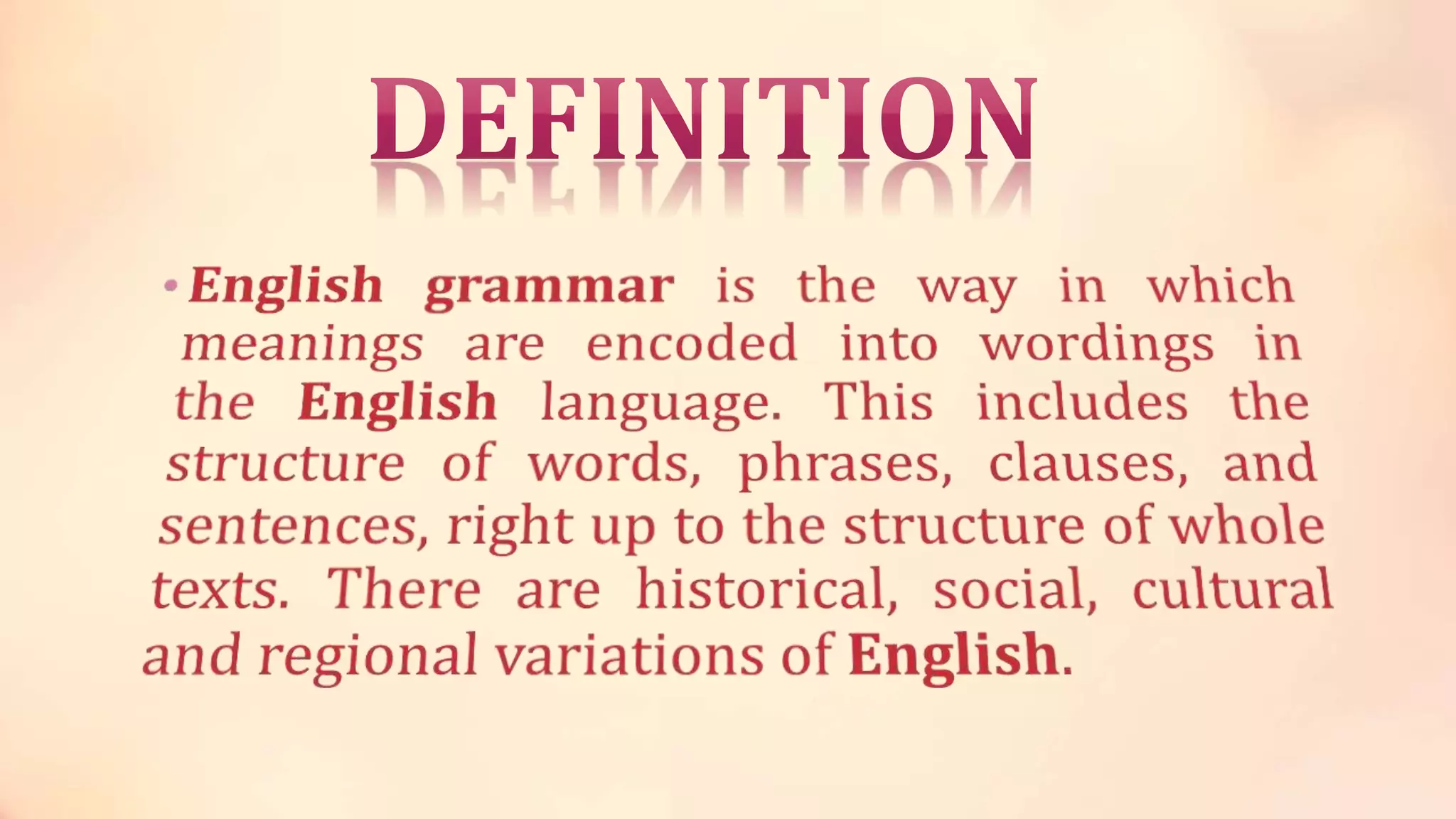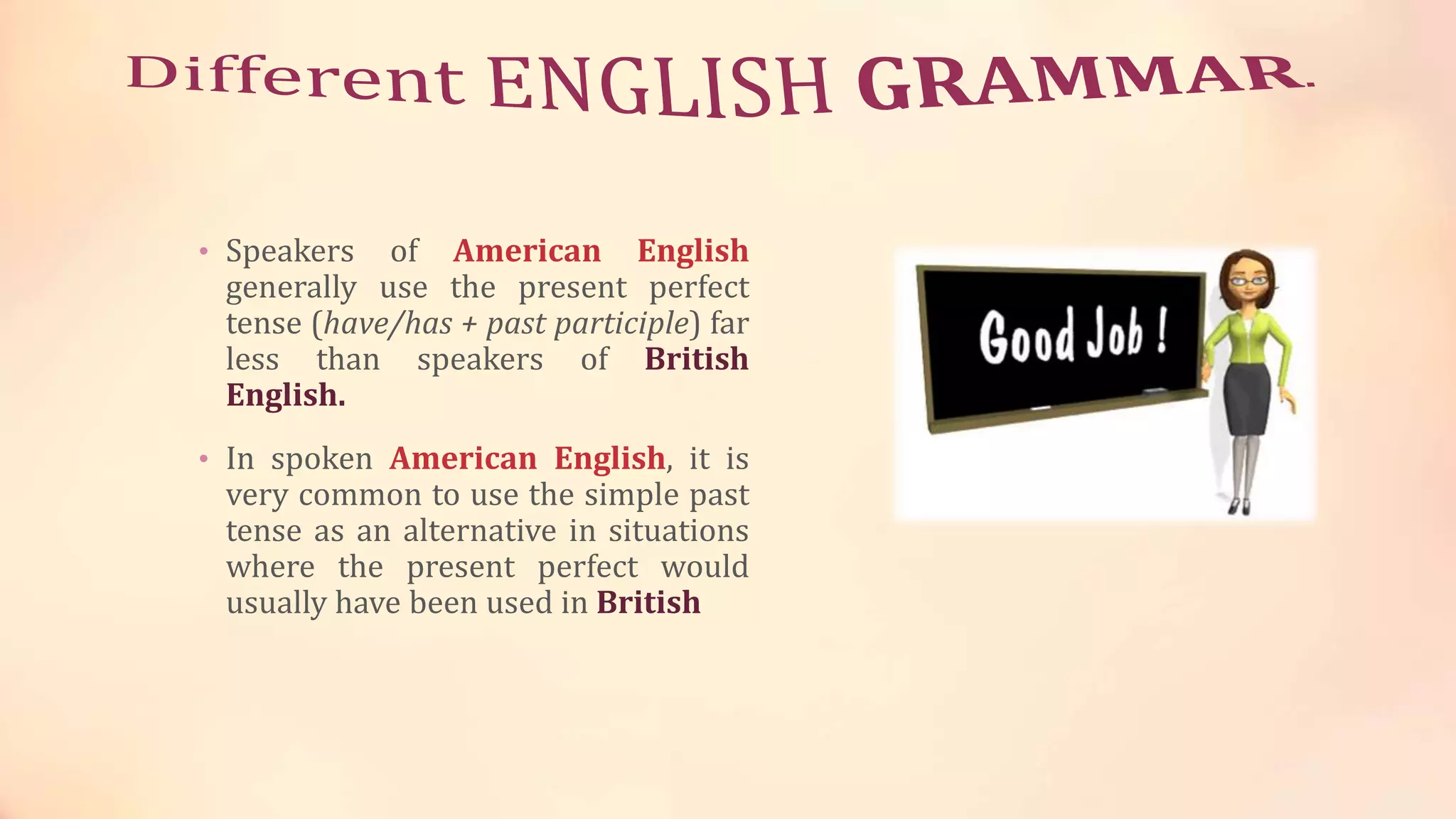Embed presentation
Download to read offline






This document discusses the main word classes in English - nouns, verbs, adjectives, and adverbs. It notes that nouns are the most common type of word, followed by verbs, with adjectives and adverbs being less frequent. Verbs are a main part of sentences and questions, while adverbs modify adjectives, verbs, and other adverbs to express aspects like time, place, manner, and degree. The document also notes differences in present perfect tense usage between American and British English.




